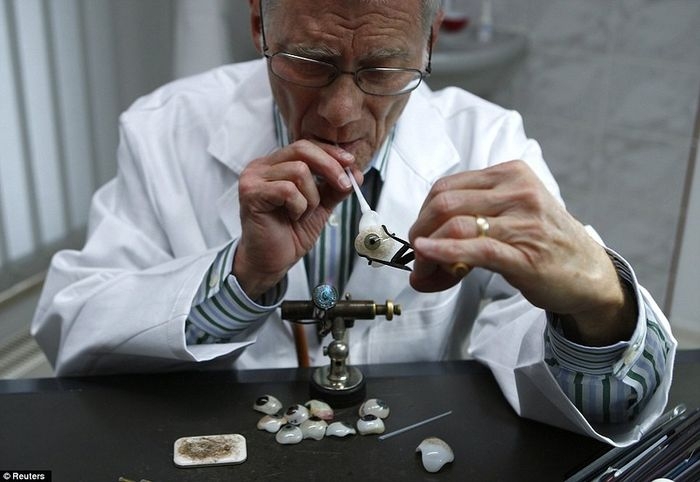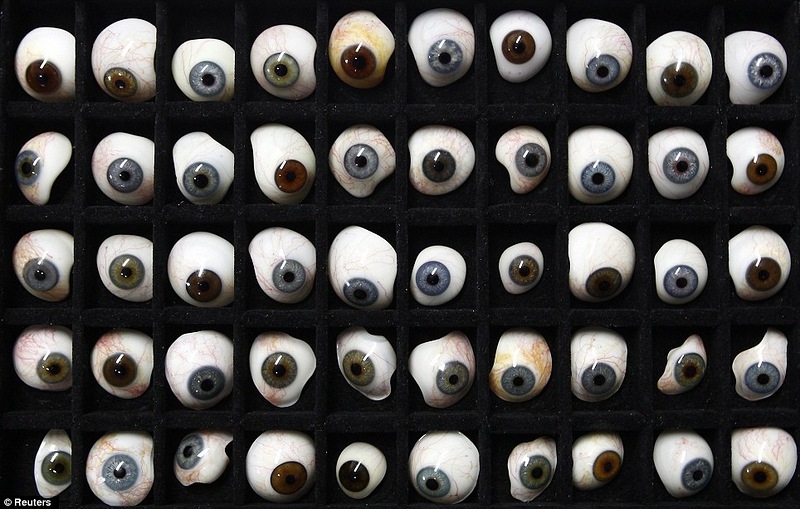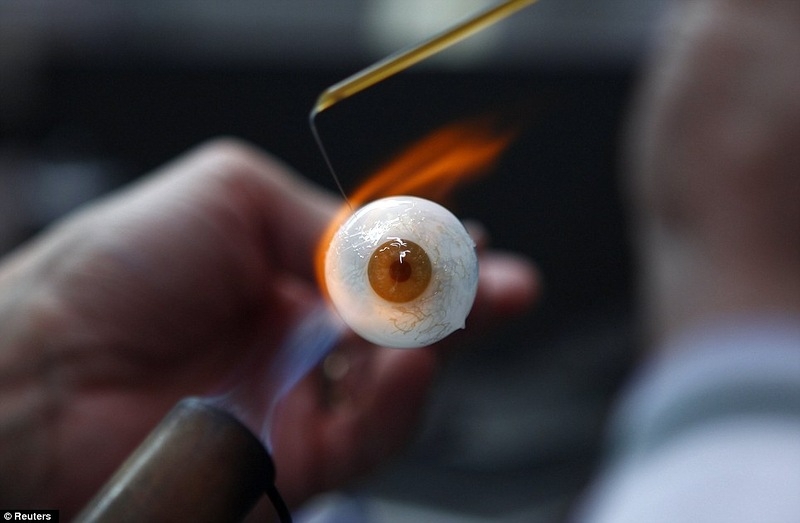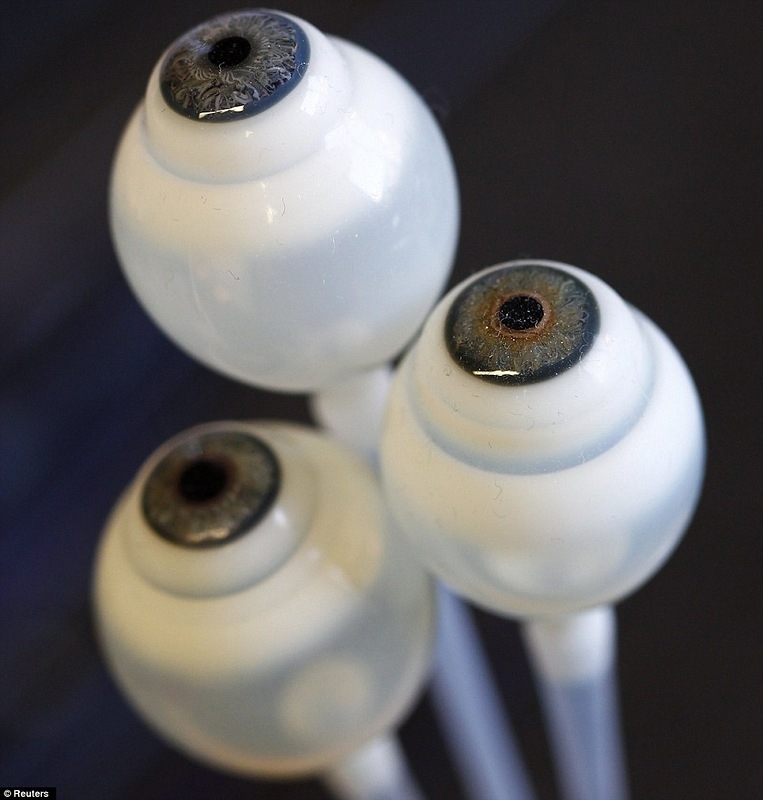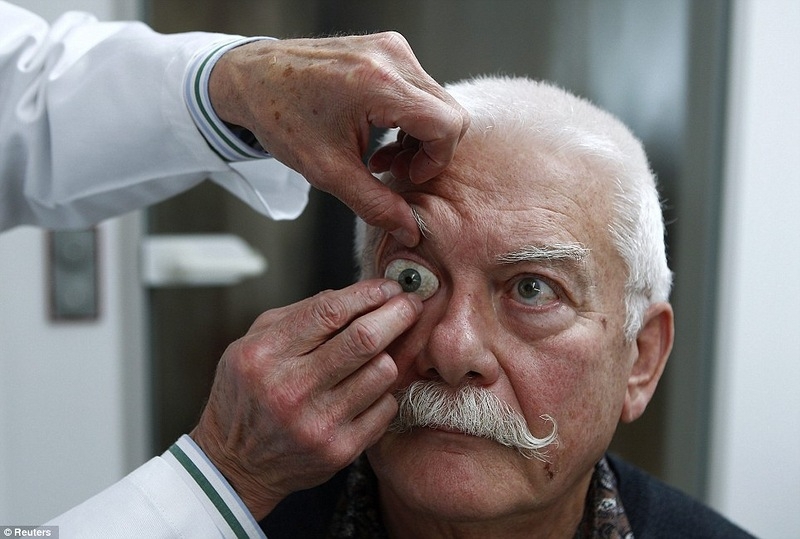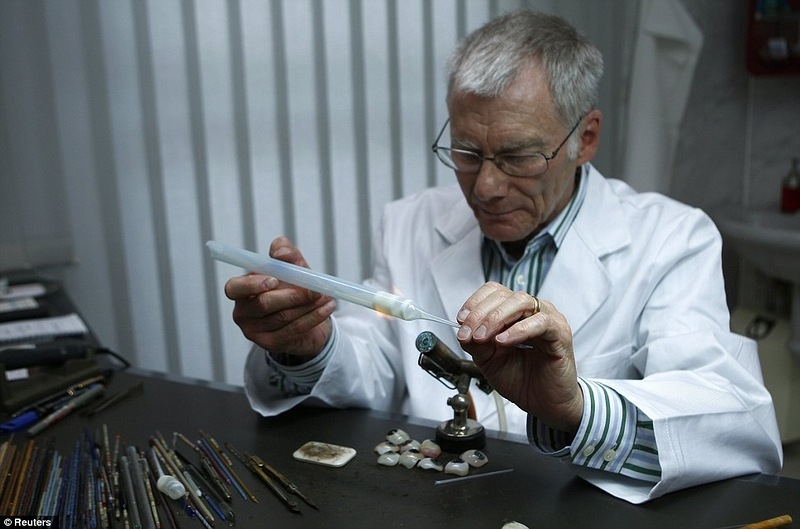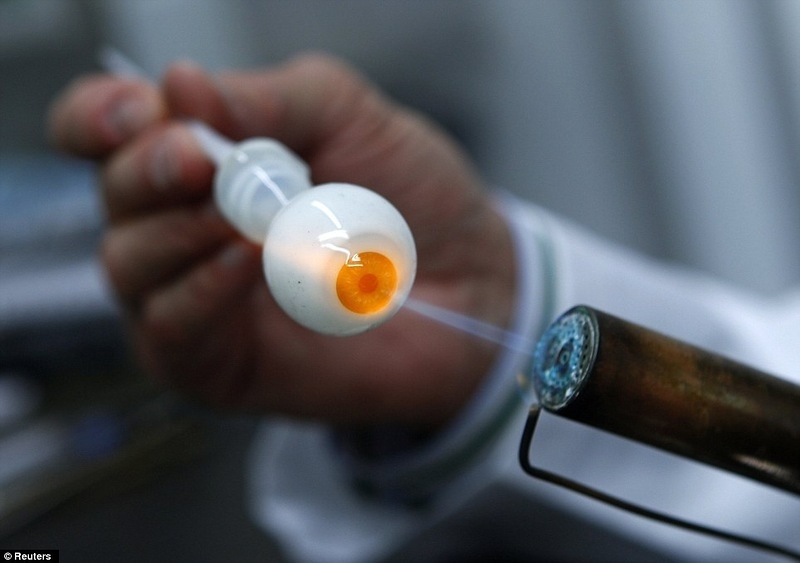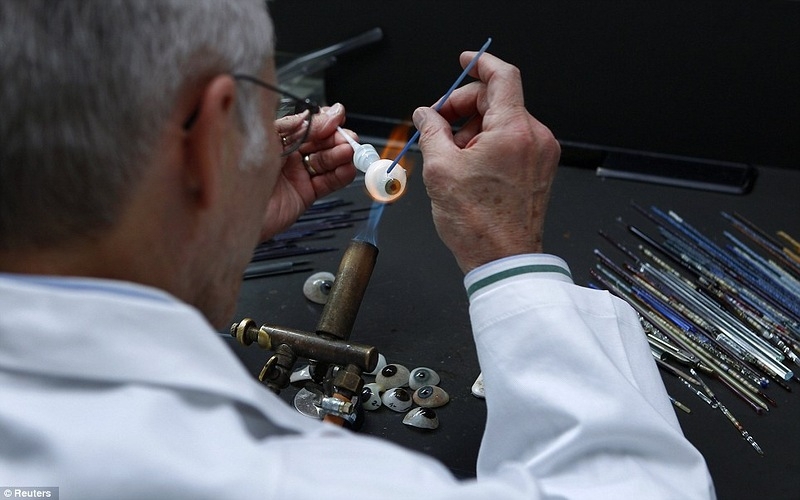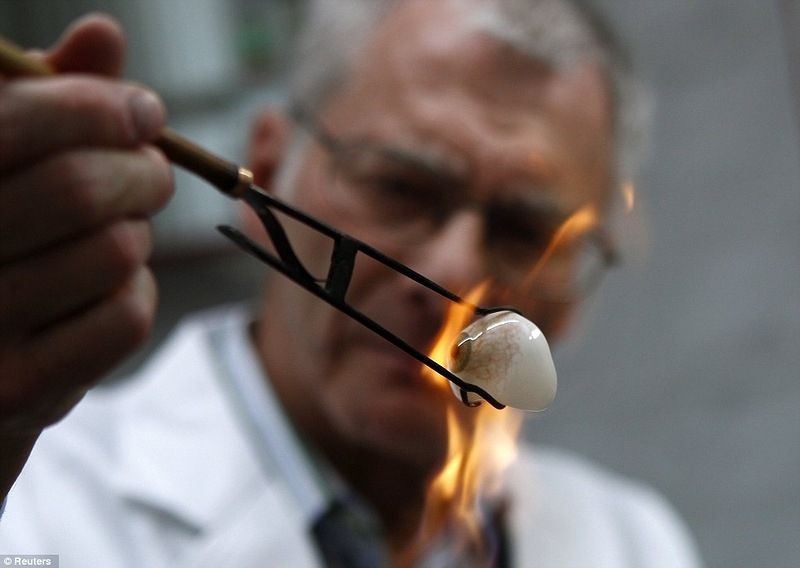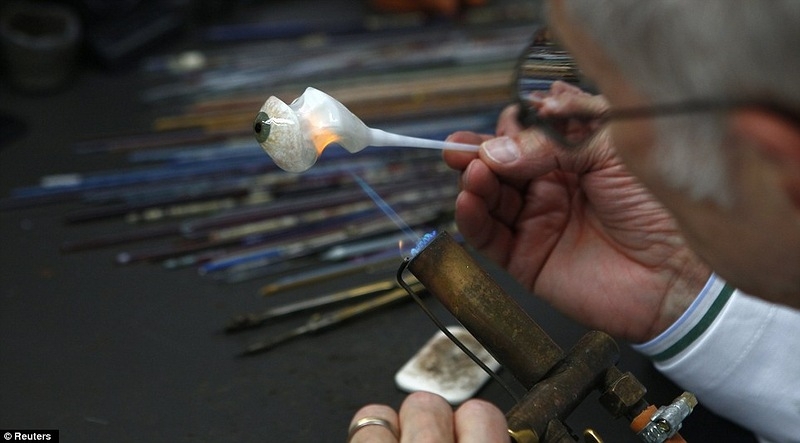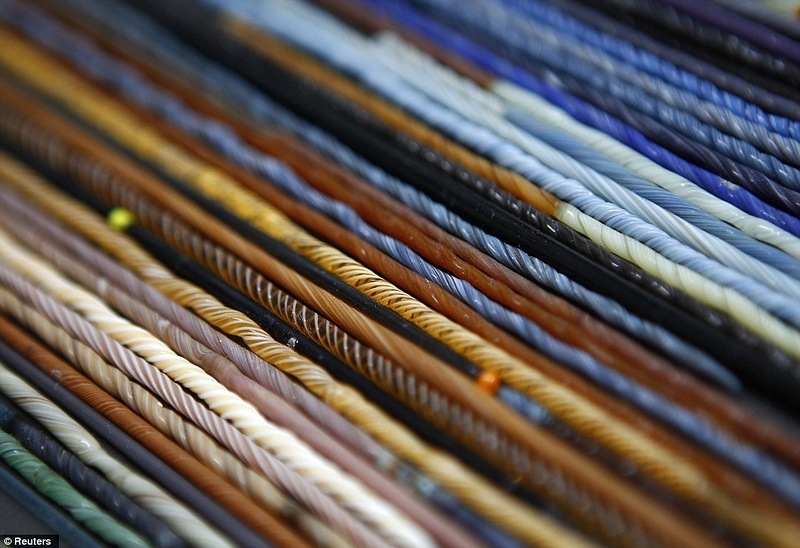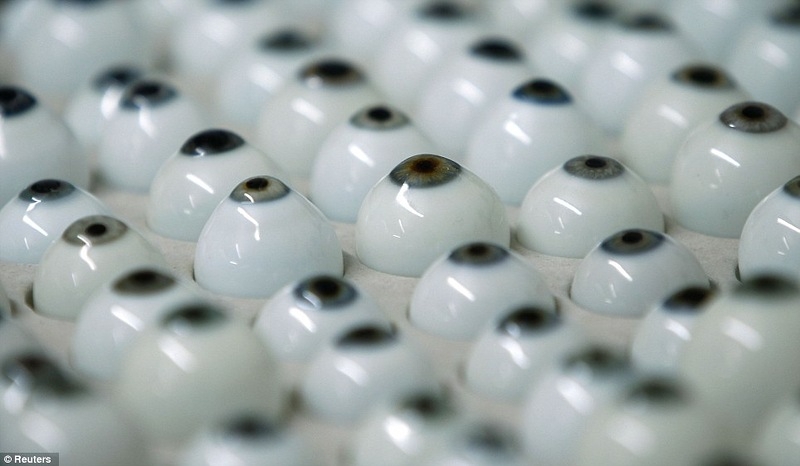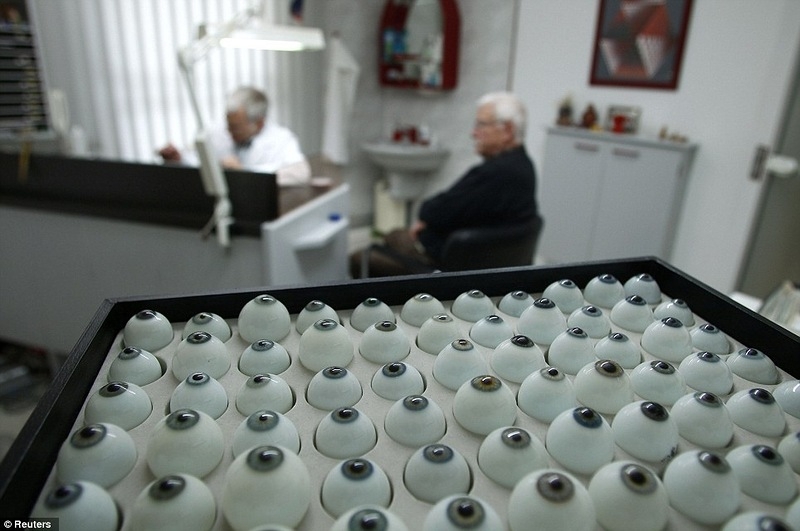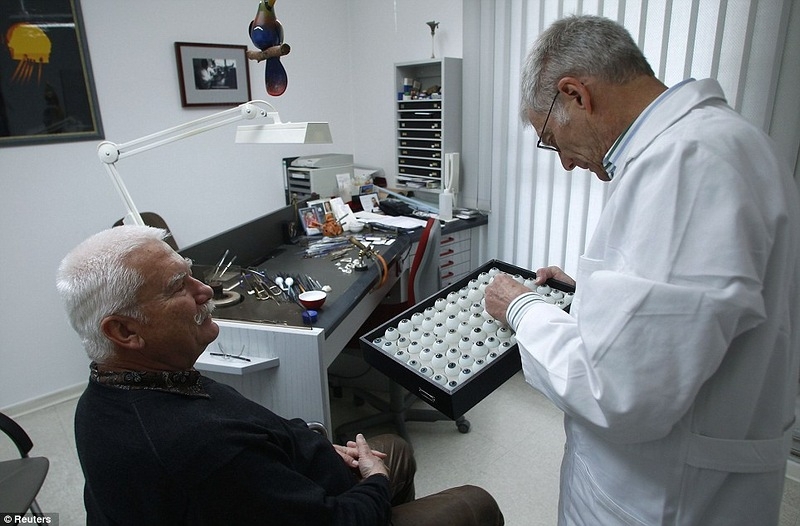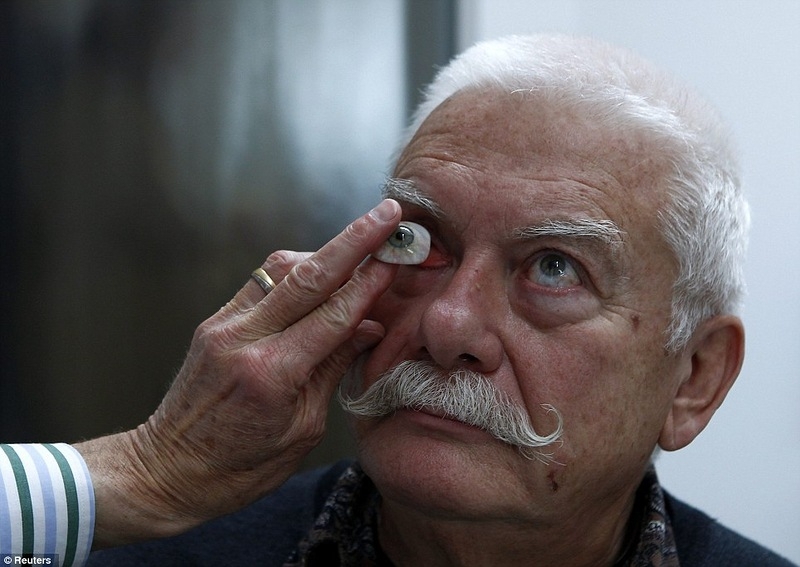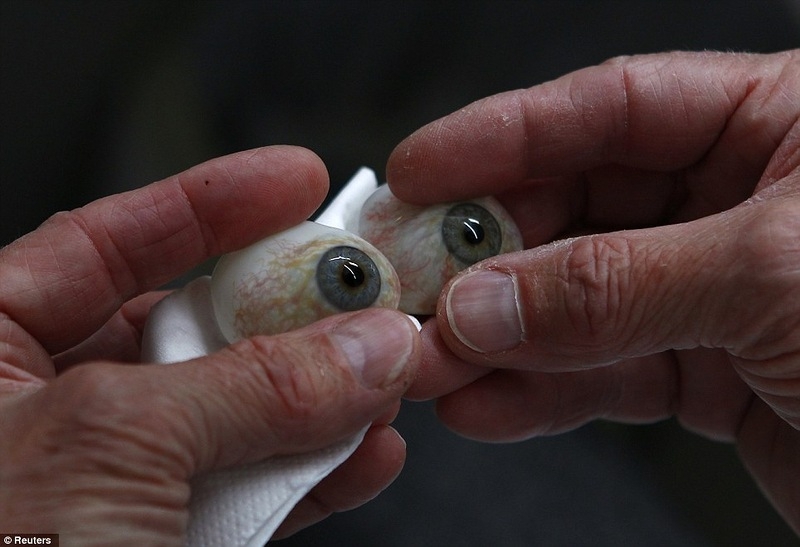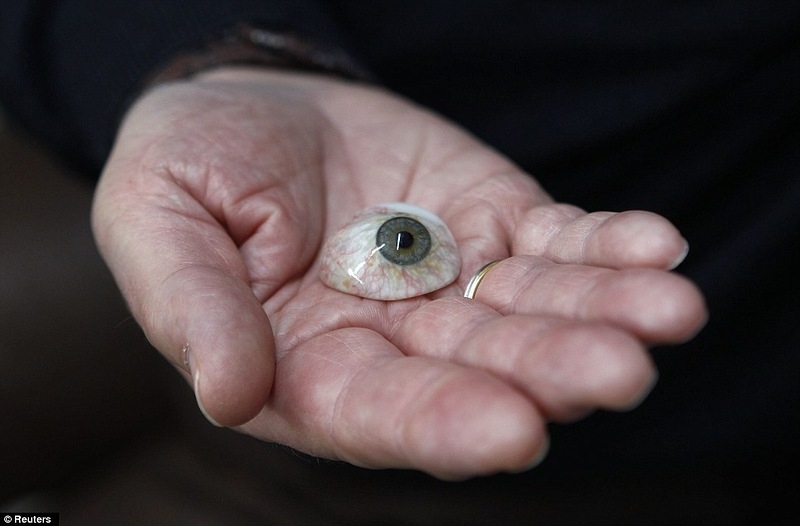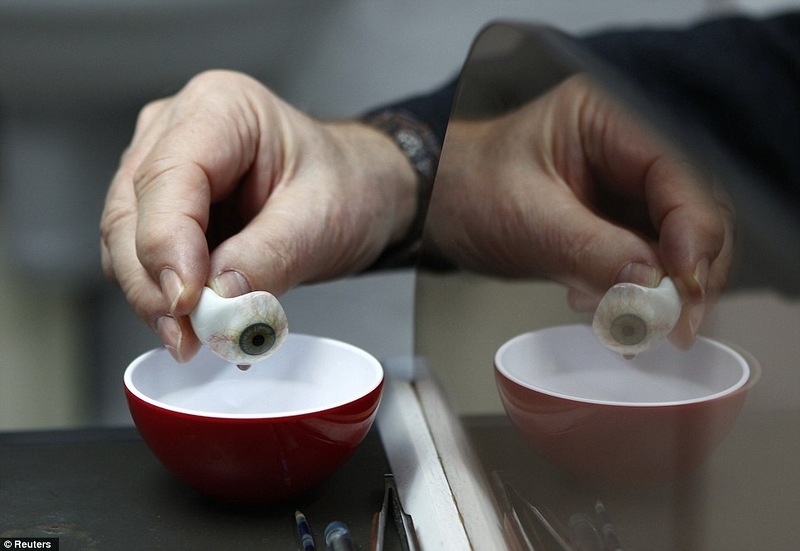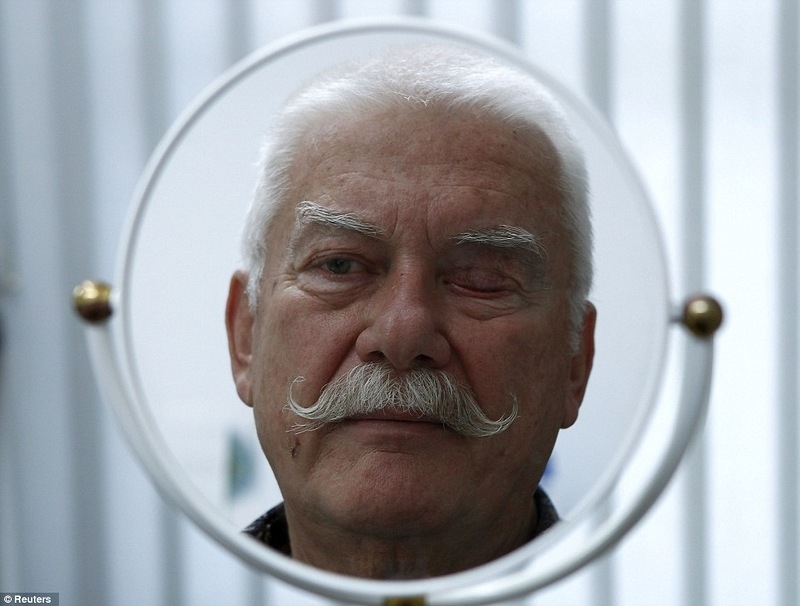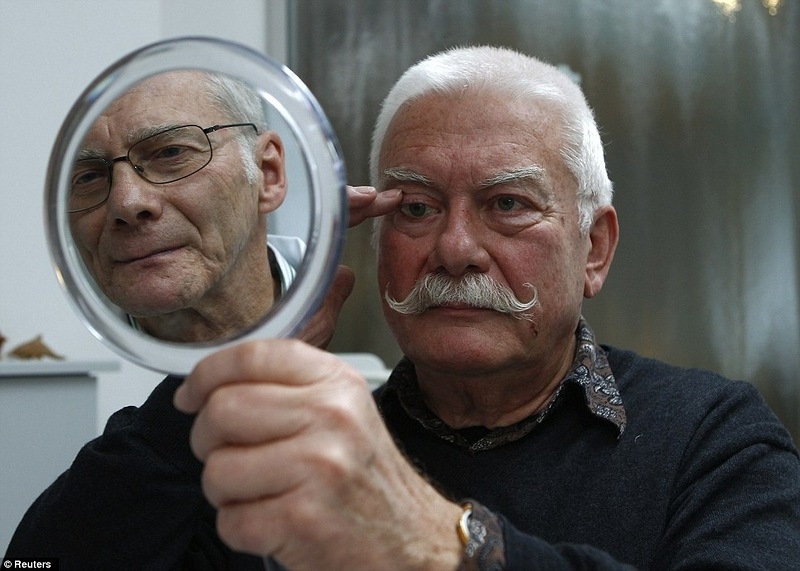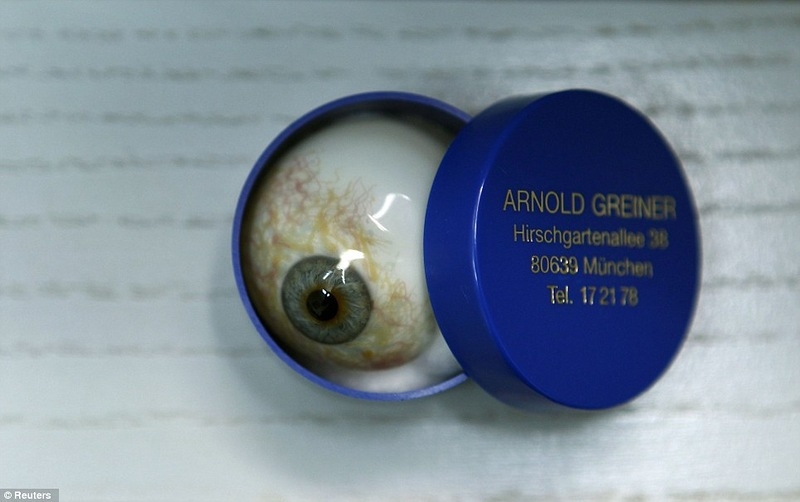585
23
In his medical equipment shop in Munich, ocularist Gerhard Greiner makes glass-blown prosthetics for people who have lost an eye or eyes due to trauma, illness or accidents.
Each glass eye takes Mr Greiner about one hour to produce as he painstakingly ensures he gets the right colour for each patient and creates detailed drawing of the veins.
Each glass eye takes Mr Greiner about one hour to produce as he painstakingly ensures he gets the right colour for each patient and creates detailed drawing of the veins.
Losing an eye can be devastating, not just physically but psychologically.
Although artificial ones may not be able to restore sight, modern prosthetics are so realistic, patients who had felt self-conscious about their new appearance feel confident about going out again.
Now one German eyemaker has given an extraordinary behind-the-scenes demonstration of how the intricate art is done.
Although artificial ones may not be able to restore sight, modern prosthetics are so realistic, patients who had felt self-conscious about their new appearance feel confident about going out again.
Now one German eyemaker has given an extraordinary behind-the-scenes demonstration of how the intricate art is done.
A bespoke glass eye prostheses costs about €350 ($457).
Modern-day versions are typically a hollow half sphere that fits over the non-working eye if it still in place.
Otherwise, it goes over a ball that has been surgically implanted into the eye socket and attached to the eye muscles.
They are so realistic many people don't even realise patients have a fake eye.
Modern-day versions are typically a hollow half sphere that fits over the non-working eye if it still in place.
Otherwise, it goes over a ball that has been surgically implanted into the eye socket and attached to the eye muscles.
They are so realistic many people don't even realise patients have a fake eye.
The earliest known evidence of the use of ocular prosthesis was found on a woman in Shahr-I Sokhta, Iran, which is thought to date back to 2,900-2,800BC.
It had a hemispherical form, had a diameter of just over 2.5 cm and was made of very light material, possibly bitumen paste. The surface of the artificial eye is covered with a thin layer of gold.
The first in-socket artificial eyes were made of gold with colored enamel by the Venetians in the latter part of the 16th century.
It had a hemispherical form, had a diameter of just over 2.5 cm and was made of very light material, possibly bitumen paste. The surface of the artificial eye is covered with a thin layer of gold.
The first in-socket artificial eyes were made of gold with colored enamel by the Venetians in the latter part of the 16th century.


